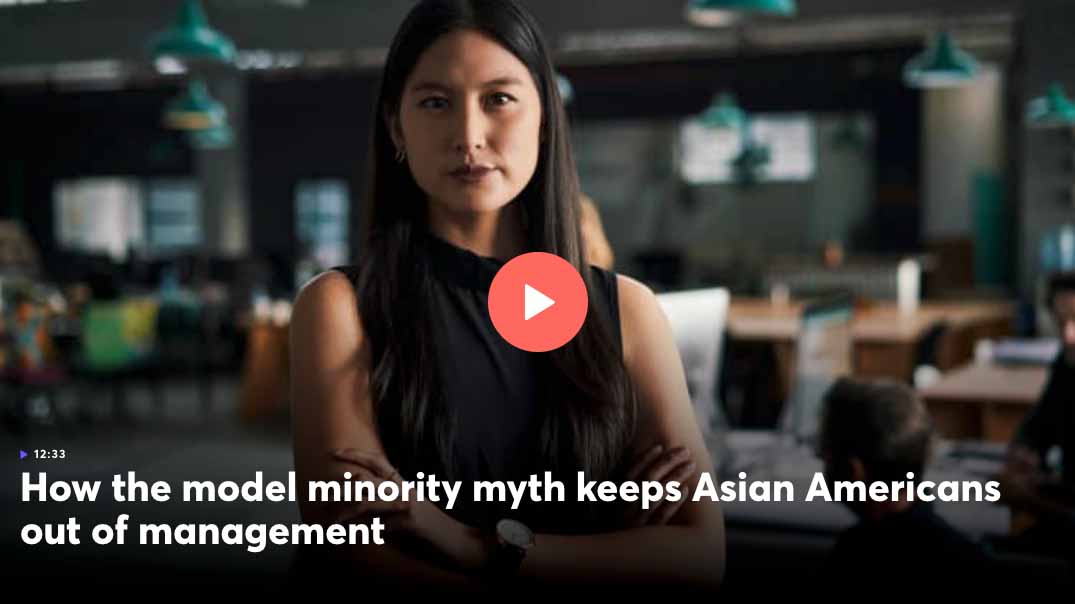Deeper Understanding
HOW THE "MODEL MINORITY" MYTH HURTS
This 12-minute video from CNBC focuses on stereotypes about Asian American workers than can limit opportunities for advancement. It also includes some brief comments about how the Model Minority myth historically has been used to drive a wedge between different minority groups in the U.S.
Category: Race
THE PSYCHOLOGY OF AMERICAN RACISM
Why does racism persist, even when so many are fighting to eliminate it? We often speak of institutionalized racism, i.e., the ways in which school systems, financial institutions, governments, and employers treat whites and people of color differently. In order to end racism, we need to understand those organizational and institutional barriers, and to change them.
To bring about change, we need to understand not just the institutions, but the people who live and work in them. Why do they carry on inherited patterns of discrimination, and perhaps even introduce new ones? To understand this, it is helpful to understand the psychology of racism.
Category: Race
GENDER AND LEADERSHIP: A REVIEW OF THE RESEARCH
Since the 1970s, research has demonstrated that people associate leadership traits more with men than with women. We have seen some significant changes over time so that today, more people are comfortable with women leaders. Yet there is no doubt that the path to leadership for women is more challenging than for men. Below are some key points from an article by Alice H. Eagly, a leading scholar of gender and leadership.
- Continue reading
- Stereotypes about men and leaders are similar. They are both seen as “agentic” (i.e., assertive, dominant, and authoritative.) In contrast, stereotypes of women are that they are “communal” (i.e., warm, supportive, and kind). Communal traits have not historically been seen as leadership traits, but this has been changing over time.
- Stereotypes of women vary by race.
- Black/African American women are seen as strong and assertive. This both helps and hurts them in leadership roles. When they behave as agentic leaders, it is more accepted than when women of other races do so. But they are penalized more for failures and mistakes.
- Asian American women are seen as more intelligent.
- White women are seen as more communal, and are penalized if they behave as agentic leaders.
- See the article for Eagly’s comments on how women political leaders are evaluated, and how the path to leadership differs for men and women.
Category: Gender, intersectionality
A GUIDE TO GENDER IDENTITY TERMS
Terms about gender identity are evolving. Here is a glossary of terms and their current usage from NPR. In particular, it addresses the question of pronouns.
Category: LGBTQIA+
WHAT IS INTERSECTIONALITY?
Here's a quick video that explains the concept of intersectionality.
Category: Intersectionality, race, gender, LGBTQIA+






